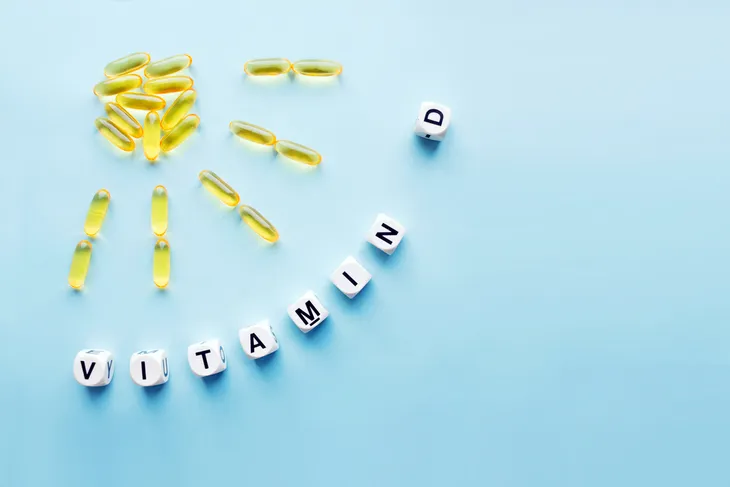You may have experienced seasonal affective disorder, or SAD, at some point in your life and not even known it. Roughly 4 to 6-percent of Americans do every year, with another 10 to 20 percent experiencing a milder form of this pervasive condition.
Instances of SAD used to be brushed off as temporary brushes with the winter blues and nothing more. But medical science has come a long way, as has our understanding of the troubling effects of a lack of exposure to natural light.
Today, we’re going to do more than explore the mechanics and symptoms of seasonal affective disorder. We’re also going to break down a few common home remedies that may help break you out of it.
What Is Seasonal Affective Disorder?
Seasonal Affective Disorder is considered a type of depression. One that is triggered by the seasonal changes in daylight and weather patterns of the winter months. Symptoms often begin to appear in the late fall or early winter, though on rare occasions SAD can manifest in the summer months too.
Medical science is split on the origins of SAD. Some believe that the seasonal changes in daylight disrupt the body’s circadian rhythm, some posit that the shift in seasons disrupts our body’s ability to produce serotonin and melatonin, and others still blame it on a lack of sun-sourced vitamin D.
Common Symptoms of SAD
While doctors do disagree on the biological machinations of SAD, there is consensus when it comes to the most commonly occurring symptoms. Seasonal Affective Disorder is a form of depression, and the symptoms reinforce that fact.
Those suffering from SAD may feel depressed most of the day, have low energy, and suffer from problems sleeping. They may lose interest in activities that they once enjoyed, feel sluggish or agitated, and have difficulty concentrating. Feelings of hopelessness, worthlessness, and guilt are also quite common.
Frequent suicidal thoughts can occur in those suffering from SAD as well, which is why reaching out for professional support can be so important. Having said that, patients with milder cases may find relief from one or more of the following home remedies.
Light Therapy
These days, artificial light boxes are very common. They are common because light therapy can be incredibly effective in beating back the symptoms of SAD.
Enjoying the benefits of light therapy is quite simple too. Just purchase an artificial light therapy box and sit in front of it for roughly 20 to 30-minutes per day. Designed to mimic the natural light of the sun, phototherapy boxes can be an effective and drug-free treatment for those suffering from SAD.
Self-Care
Self-care is always important but taking a proactive approach to maintain your mental health can be particularly important in the winter months.
Meditation, long baths, reading, walking, or prioritizing time spent with friends can go a long way. The goal is to first understand what it is that helps you unwind and destress, and then to make space in your schedule.
Increase Natural Light
Before you go rushing out to purchase a phototherapy box, take the time to assess your living and work conditions to see if there might be a creative way for you to increase your daily exposure to natural light.
Natural light has been clinically shown to beat back the symptoms of SAD, so treat it like you would water and get as much of it every day as you can. Go for walks on your lunch break, clear sunlight-blocking foliage, or install a skylight.
Clean Up Your Diet
You may be unable to increase your exposure to natural light, but one thing you do have control over is the food you use to fuel your body.
Several studies have established a link between a diet rich in poor quality food and depression. Specifically, a diet made up of predominantly processed meats, chocolates, sweet desserts, fried food, refined cereals, and high-fat dairy products.
Simply put, your mental health depends on a well-balanced diet. So, increase your intake of fruit, vegetables, whole grains, fish, olive oil, low-fat dairy, and antioxidants to decrease your risk of depression today.
Vitamin D
SAD symptoms are often concurrent with low dietary intake of vitamin D. Sure, your body can absorb this essential vitamin through exposure to natural light but sunbathing in the middle of the winter just isn’t an option for most people.
Instead, doctors recommend supplementing your lifestyle with vitamin D. This powerful biological building block is associated with normalized blood pressure, a reduced cancer risk, and an improved immune system. So even if vitamin D supplementation doesn’t noticeably alleviate your SAD symptoms, there are still numerous benefits to making it a habit.
Exercise
Exercise is widely accepted as an effective treatment for many forms of depression. Regular physical activity can improve your self-esteem. Exercise also causes your body to release endorphins, which in turn trigger positive feelings in your body, diminish the perception of pain, and help you sleep better.
If you’re looking to make the most of your situation, try your best to exercise outside in the sunshine. Failing that, popping on an exercise video, or lifting weights indoors should still give you the mental and physical boost that you crave.
 Source: Shutterstock
Source: ShutterstockAvoid Alcohol
You’re more likely to consume alcohol when feeling down. If that sounds like you, it’s important to understand that the short-term benefits that you perceive often make way to long-term drawbacks. Excessive drinking can lower the quality of your sleep, increase your risk of dementia, and increase your risk of developing liver disease, heart disease, and cancer.
Heavy drinking is indeed a major cause of depression in some individuals. You may think that beer is alleviating your symptoms of anxiety or reducing your stress, it’s most likely worsening your overall mental health and creating a vicious cycle instead.
Go on Vacation
There are plenty of healthy ways to de-stress without turning to the bottle. Hopping on a plane in search of sunnier locales can shake up your routine, increase your exposure to natural light, and boost your mood.
If a trip abroad isn’t in the financial cards then consider a staycation. Take a few days off to visit your favorite local establishments or book a room in an unfamiliar city nearby and explore. Your SAD symptoms could be a sign of burnout, so don’t be afraid to take some time for yourself, whether that be at home or overseas.
Talk to Your Doctor
Anything involving anything close to the symptoms of depression should be first addressed by a medical professional. Your symptoms may be beyond the help of home remedies and may indeed require pharmaceutical intervention.
The only way to classify your condition, and plan out the most prudent path forward, is through an official medical diagnosis. So don’t be afraid to book yourself in for an appointment. It could save you a lot of time and trouble.
The Takeaway
Seasonal affective disorder can impact anyone, and when it hits, it can really level you. Lethargy, anxiety, poor sleep… the list goes on. But don’t be discouraged because, thanks to the internet and some pointed professional advice, even you can get back to feeling like your peak summer self.
If you believe that you may be suffering from SAD, avoid alcohol, get more exercise, go on vacation, clean up your diet, supplement with vitamin D, and try your best to increase your exposure to natural light. No two people are alike, and no two lifestyle changes will create the same result, but the more you try to optimize your life, the better off you’ll be.














